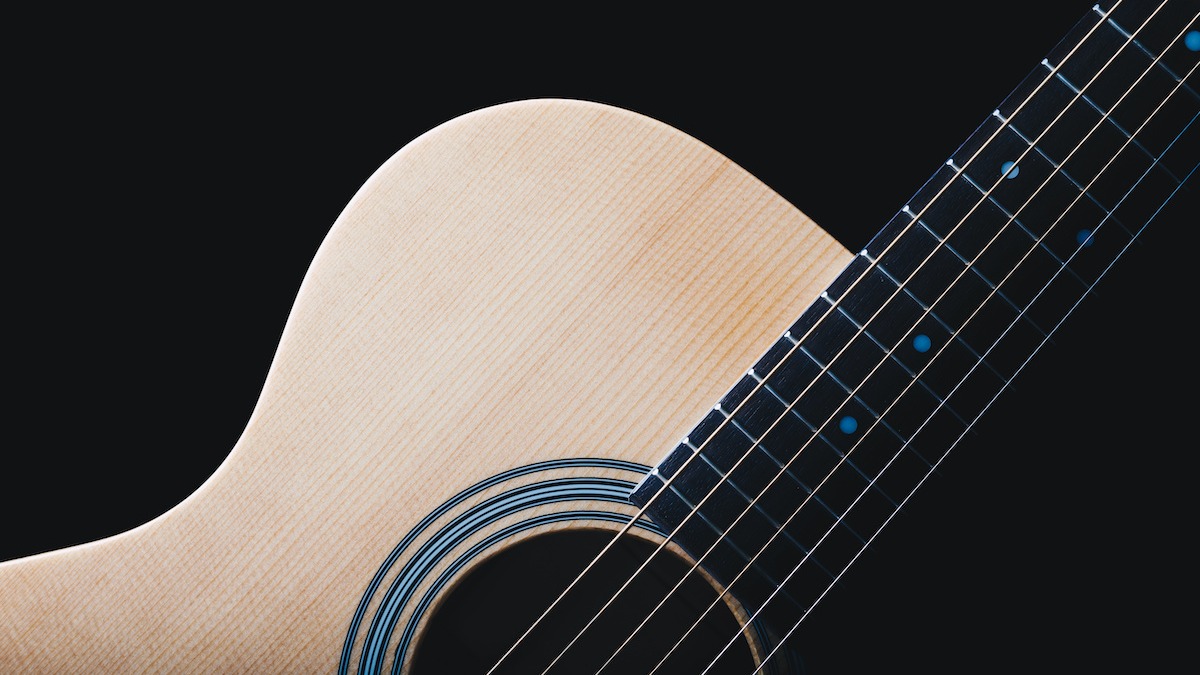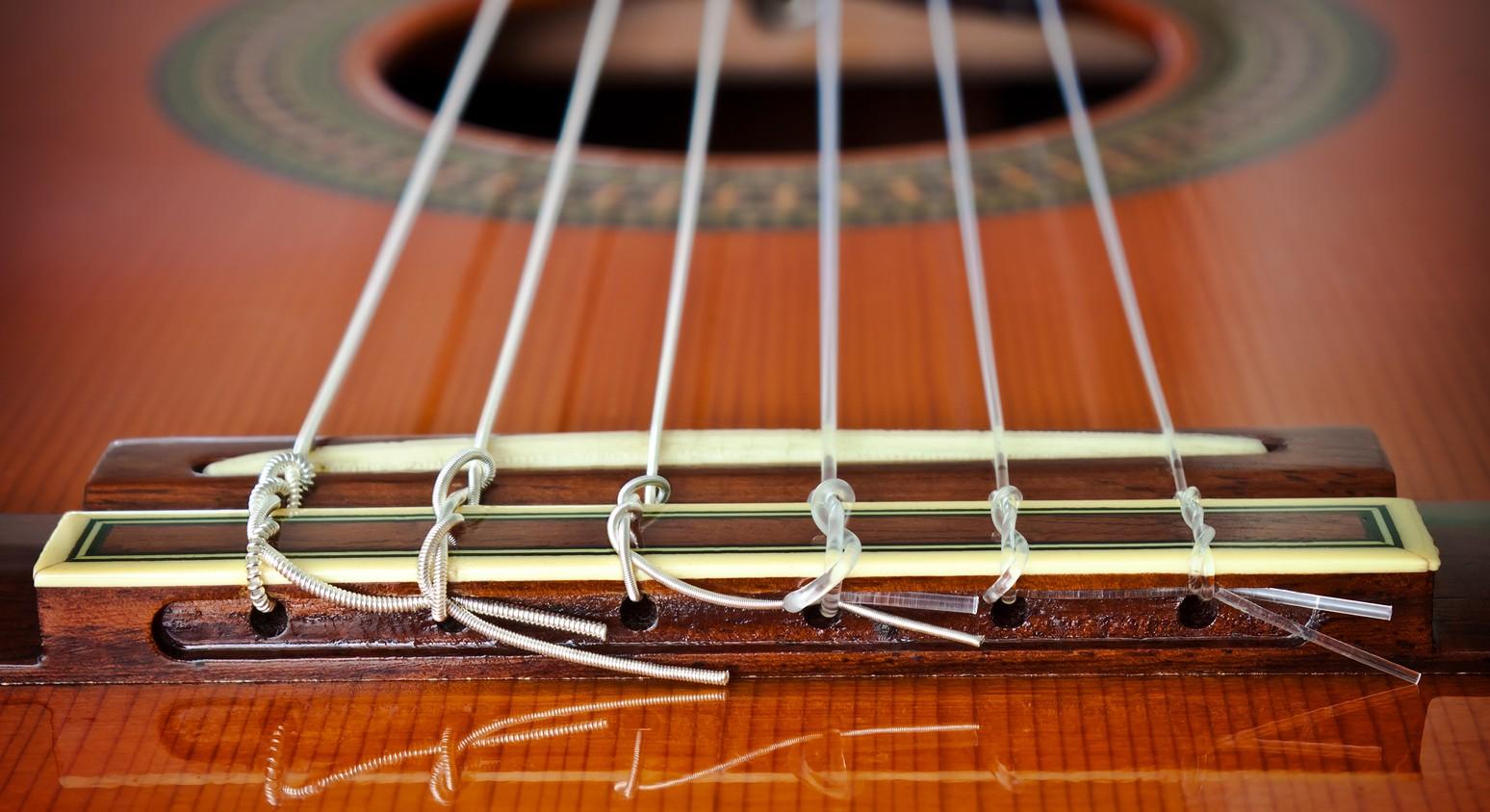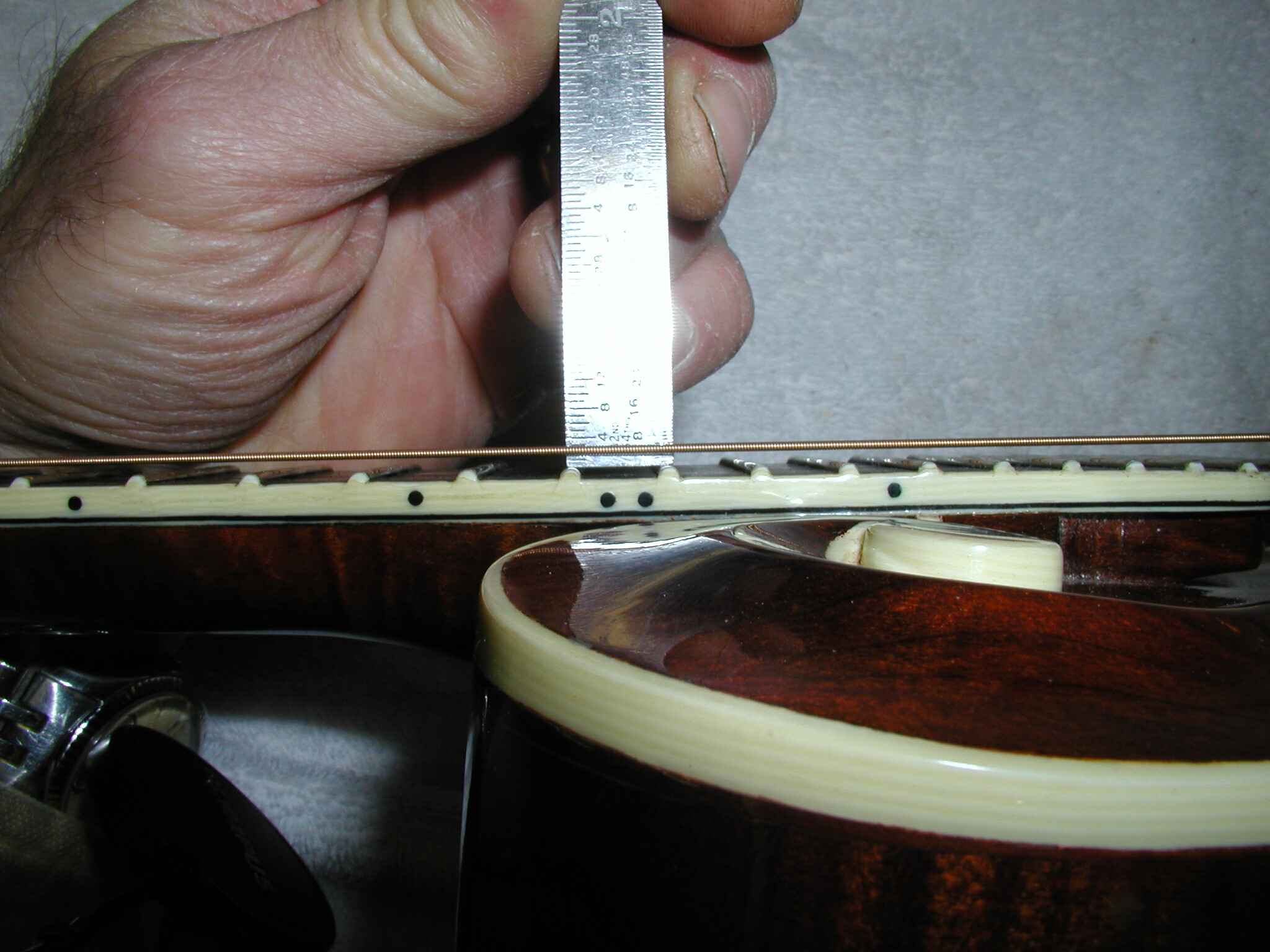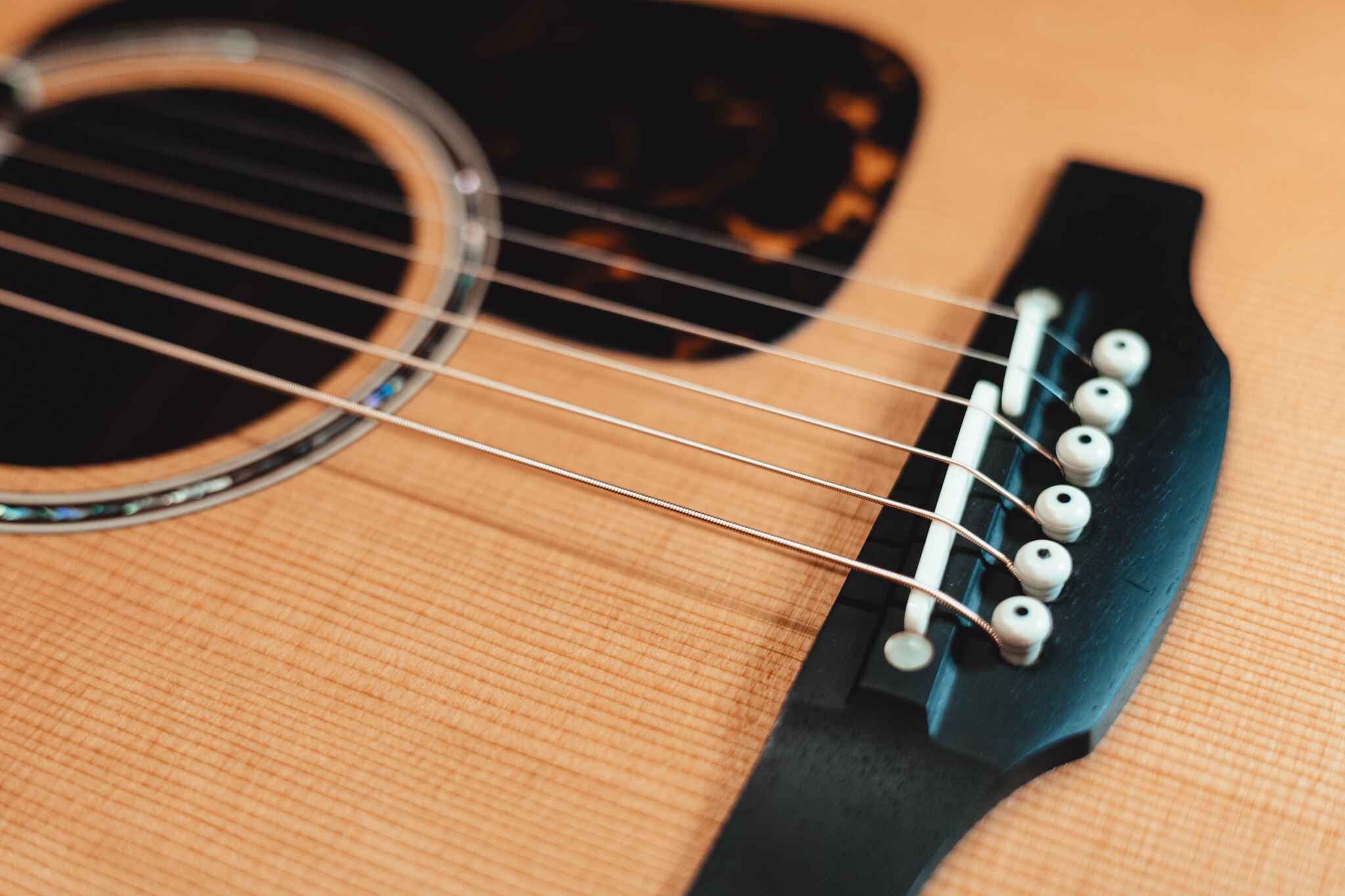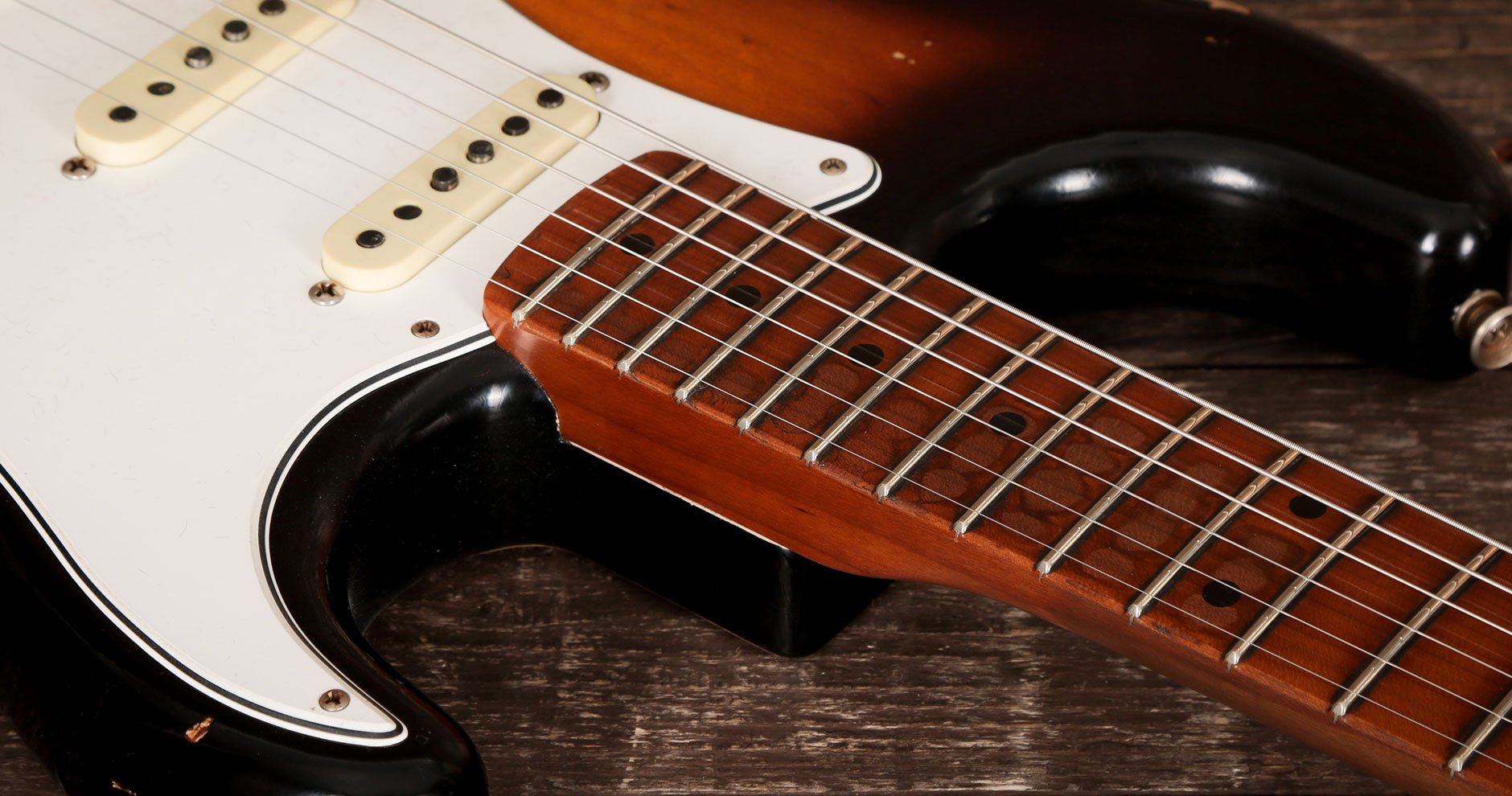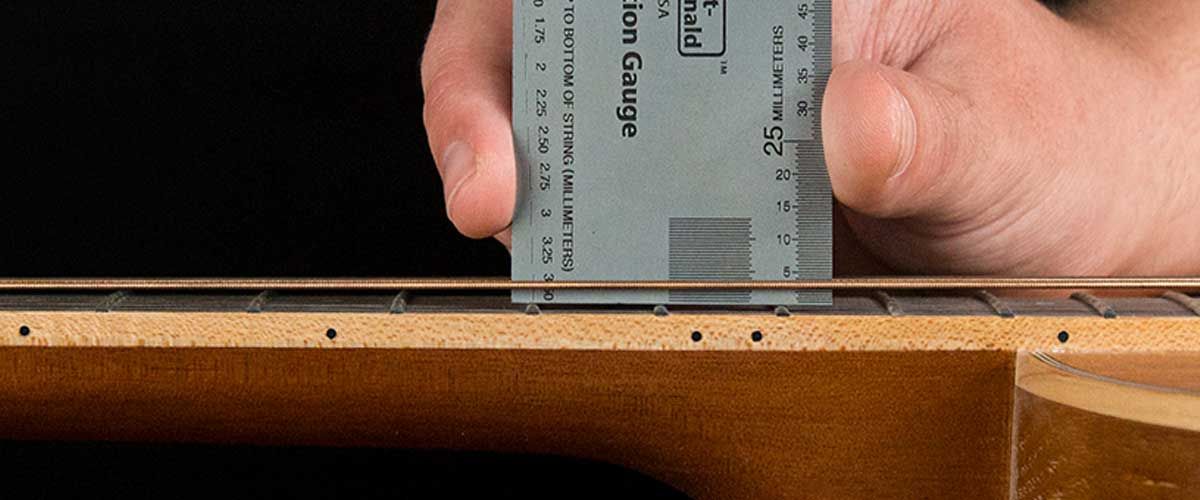Introduction
When it comes to playing the acoustic guitar, the choice of strings can significantly impact your playing experience. One important factor to consider is the gauge of the strings. Gauge refers to the thickness of the strings, and different gauges produce different tones and feel under the fingers.
In this article, we will focus on exploring the lightest gauge acoustic guitar strings available. Light gauge strings have thinner diameters, offering several advantages for guitarists of all skill levels. Whether you are a beginner looking for easier playability or an experienced player seeking enhanced tonal clarity, light gauge acoustic guitar strings may be the right choice for you.
In the following sections, we will discuss the reasons to choose light gauge strings, factors to consider when selecting the lightest gauge, the benefits and disadvantages of using light gauge strings, different types available in the market, recommended options, and some tips for changing to light gauge acoustic guitar strings.
By the end of this article, you should have a clear understanding of the lightest gauge acoustic guitar strings and whether they are suitable for your playing style and preferences.
Why Choose Light Gauge Acoustic Guitar Strings?
Light gauge acoustic guitar strings have become increasingly popular among guitarists for several reasons. Let’s delve into why you might consider choosing light gauge strings for your acoustic guitar:
1. Easier playability: Light gauge strings have thinner diameters compared to heavier gauge strings. This makes them easier to press down, particularly for players with smaller hands or beginners who are still developing finger strength. The reduced tension also allows for faster playing and smoother bending of strings.
2. Enhanced expressiveness: Light gauge strings offer increased responsiveness and sensitivity to your playing technique. They allow for greater control in terms of dynamics, articulation, and expression, making them ideal for fingerstyle playing and intricate picking patterns.
3. Improved tonal clarity: Light gauge strings have a brighter and clearer tone due to their lower mass. This can enhance the overall clarity and projection of your acoustic guitar. Additionally, the thinner strings can bring out the natural resonance of the instrument, providing a more balanced sound.
4. Reduced finger fatigue: Since light gauge strings require less effort to press down, they can minimize finger fatigue during long playing sessions or performances. This can be particularly beneficial for gigging musicians or those who practice for extended periods.
5. Versatility: Light gauge strings are highly versatile and suitable for various musical genres. Whether you play folk, pop, country, or even some lighter rock styles, these strings can provide the versatility and flexibility needed to achieve the desired tone and playing style.
While light gauge strings offer numerous advantages, it is essential to consider your playing style, musical preferences, and the characteristics of your acoustic guitar before making a decision. Factors such as the guitar’s construction, scale length, and the specific sound you want to achieve should also be considered.
Now that we’ve explored the reasons to choose light gauge acoustic guitar strings, let’s move on to the factors you should consider when selecting the lightest gauge for your instrument.
Factors to Consider When Choosing the Lightest Gauge
Choosing the lightest gauge acoustic guitar strings requires careful consideration to ensure that they are well-suited to your playing style and the characteristics of your instrument. Here are some important factors to keep in mind:
1. Playing Style: Consider the type of music you play and the techniques you use. If you primarily play fingerstyle or engage in intricate picking patterns, lighter gauge strings may be a good fit. However, if you favor aggressive strumming or heavy picking, you may benefit from a slightly heavier gauge for more durability and resistance to wear.
2. Desired Tone: The gauge of the strings directly affects the overall tone of your guitar. Lighter gauge strings generally produce a brighter and more articulate tone with enhanced high-frequency response. If you prefer a warmer or fuller sound, you may opt for a slightly heavier gauge.
3. Guitar Construction: Consider the construction and bracing of your acoustic guitar. Some guitars are better suited for lighter gauge strings, while others may require a slightly heavier gauge to achieve optimal tension and resonance. It’s advisable to consult with a guitar technician or experienced players to ensure compatibility.
4. Neck Relief and Action: The neck relief and action of your guitar can affect the playability and feel of light gauge strings. If your guitar has a high action or excessive neck relief, lighter strings may feel too loose or produce unwanted buzzing. It’s important to have proper setup and adjustment to optimize the playability of your chosen gauge.
5. String Longevity: Keep in mind that lighter gauge strings are generally more prone to breakage and wear out faster compared to heavier gauges. If you play frequently or engage in intense playing sessions, you may need to replace light gauge strings more often. Consider the cost and frequency of string changes when choosing your gauge.
6. Personal Preference: Ultimately, your personal preference plays a crucial role in selecting the lightest gauge acoustic guitar strings. Experiment with different gauges and take note of the feel, tone, and playability to determine which gauge suits your preferences and playing style the most.
By considering these factors, you can make an informed decision when choosing the lightest gauge strings for your acoustic guitar. Now, let’s explore the benefits and disadvantages of using light gauge acoustic guitar strings.
Benefits of Light Gauge Acoustic Guitar Strings
Light gauge acoustic guitar strings offer several advantages that can enhance your playing experience and overall sound. Let’s explore the benefits of using light gauge strings:
1. Easy Playability: One of the main benefits of light gauge strings is their ease of playability. With thinner diameters, they require less finger pressure to fret notes and perform chord transitions. This makes them ideal for beginners or guitarists with smaller hands who may find heavier gauge strings challenging to play.
2. Increased Responsiveness: Light gauge strings are more sensitive to your touch and playing technique. They respond quickly to your fingers, allowing for greater control over dynamics, articulation, and expression. This responsiveness enhances the clarity and nuance of your playing.
3. Enhanced Flexibility: Light gauge strings offer greater flexibility in terms of bending and vibrato techniques. Their thinner diameters make bending notes and applying pitch variations easier, allowing you to add more expressive elements into your playing style.
4. Bright and Clear Tone: Light gauge strings produce a brighter and clearer tone due to their lower mass. They accentuate the high-frequency range, resulting in a more articulate sound. This tonal quality is desirable for many genres such as folk, pop, and fingerstyle where clarity and definition are essential.
5. Improved Finger Comfort: The reduced tension of light gauge strings can contribute to improved finger comfort during long playing sessions or performances. With less effort required to press down the strings, you can play for longer periods without experiencing significant finger fatigue.
6. Versatility: Light gauge strings are versatile and suitable for various musical styles. Whether you’re strumming chords or navigating intricate fingerpicking patterns, these strings adapt well to different playing techniques and musical genres.
7. Compatibility with Vintage Instruments: Light gauge strings are often recommended for vintage acoustic guitars with delicate or less sturdy construction. The lighter tension helps to minimize stress on these instruments, reducing the risk of damage and preserving their vintage charm.
8. Affordability: Light gauge strings are generally more affordable compared to heavier gauge strings. This makes them a budget-friendly option, especially if you go through strings frequently or want to experiment with different brands and materials.
These benefits make light gauge acoustic guitar strings an attractive choice for many guitarists. However, it’s important to consider the potential drawbacks associated with this gauge, which we will explore in the next section.
Disadvantages of Light Gauge Acoustic Guitar Strings
While light gauge acoustic guitar strings offer numerous benefits, they also come with a few disadvantages that you should consider before choosing them for your instrument. Let’s explore some of the potential drawbacks:
1. Reduced Volume and Projection: Light gauge strings typically produce a softer and less projecting sound compared to heavier gauges. This can be a disadvantage in settings where you need to cut through a mix or play in louder environments, such as live performances or jam sessions. Additional amplification may be necessary to compensate for the lower volume.
2. Prone to Breakage: Due to their thinner diameters, light gauge strings are more susceptible to breakage, especially if you play with strong picking or strumming techniques. This means you may need to replace them more frequently, which can increase maintenance costs and interruptions during practice or performances.
3. Less Resonance and Sustain: Light gauge strings have lower mass, which can result in reduced resonance and sustain compared to heavier gauges. This may result in a slightly shorter decay time and potentially limit the overall richness and depth of your guitar’s sound.
4. Limited Bass Response: Light gauge strings may have less pronounced bass response due to their thinner diameters. If you rely heavily on low-end frequencies or play genres that emphasize deep bass tones, such as blues or jazz, you may find that heavier gauge strings better suit your needs.
5. Adjustments Needed for Setup: Switching to light gauge strings may require adjustments to your guitar’s setup. This includes adjusting the truss rod, bridge height, and intonation to optimize the playability and maintain proper string action. These adjustments may require professional assistance if you are not familiar with guitar setup techniques.
6. Reduced String Durability: Light gauge strings generally have a shorter lifespan compared to heavier gauges. The thinner diameter and lower tension make them more prone to wear and tear, leading to faster string degradation. Regular string changes may be necessary to ensure consistent tone and playability.
7. Preference-Dependent: The perceived disadvantages of light gauge strings are subjective and depend on personal preference and playing style. Some guitarists may consider the reduced volume or bass response a small trade-off for the benefits in playability and tone, while others may find these limitations more significant.
While the disadvantages should be considered, it’s important to remember that many guitarists find the benefits of light gauge strings outweigh these drawbacks. It ultimately comes down to your individual playing style, musical preferences, and the sound you want to achieve.
Now that we’ve explored both the benefits and disadvantages of light gauge acoustic guitar strings, let’s move on to the different types available in the market.
Types of Light Gauge Acoustic Guitar Strings
When it comes to light gauge acoustic guitar strings, there are several different types available on the market. The type of string you choose can have a significant impact on your playing experience and the overall sound of your guitar. Let’s take a look at the different types:
1. Bronze Strings: Bronze strings are one of the most common and popular options for acoustic guitars. They are known for their bright and articulate tone, offering excellent clarity and projection. Bronze strings are made by winding copper alloy wire around a steel core, and they come in different variations such as phosphor bronze and 80/20 bronze.
2. Phosphor Bronze Strings: Phosphor bronze strings have a warmer and fuller tone compared to traditional bronze strings. They contain a small amount of phosphorous, which adds a touch of warmth and depth to the sound. Phosphor bronze strings are favored by many acoustic guitarists for their balanced tone and longevity.
3. 80/20 Bronze Strings: Also known as “brass” or “bright” strings, 80/20 bronze strings offer a clear and bright tone. They are made from an alloy of 80% copper and 20% zinc. These strings provide a pronounced high-frequency response, making them suitable for genres and playing styles that require a sparkling and lively sound.
4. Silk and Steel Strings: Silk and steel strings are known for their softer and mellower tone. They have a smaller steel core and are wound with silk or other fibers to add a gentle touch and reduce string noise. Silk and steel strings are popular among fingerstyle players and those seeking a more vintage or folk-inspired sound.
5. Coated Strings: Coated strings have a thin polymer coating that helps prolong their lifespan and preserve their tone. The coating acts as a barrier against dirt, sweat, and moisture, which can contribute to string corrosion. Coated strings offer enhanced durability without sacrificing the tonal characteristics of the core material.
6. Nylon Strings: While not traditionally classified as “light gauge,” nylon strings are worth mentioning for their unique characteristics. Nylon strings provide a warm and mellow sound and are commonly used on classical and flamenco guitars. They are easier on the fingers and offer a different playing experience compared to steel strings.
These are just a few examples of the types of light gauge acoustic guitar strings available. Each type offers distinct tonal characteristics, so it’s important to experiment and find the one that suits your playing style, musical preferences, and the characteristics of your guitar.
In the next section, we will recommend some of the lightest gauge acoustic guitar strings that you may consider for your instrument.
Recommended Lightest Gauge Acoustic Guitar Strings
Choosing the right set of light gauge acoustic guitar strings can greatly enhance your playing experience and the overall sound of your instrument. Here are some recommended options for the lightest gauge strings:
1. Martin MSP3050 SP 80/20 Bronze Extra Light: These strings are known for their bright and balanced tone. With a gauge range of .010-.047, they are easy to play and offer excellent clarity and projection. The 80/20 bronze composition provides a crisp and vibrant sound that suits a variety of musical styles.
2. D’Addario EJ15 Phosphor Bronze Extra Light: These phosphor bronze strings have a gauge range of .010-.047. They offer a warm and articulate tone with added depth and resonance. The EJ15 strings are renowned for their long-lasting durability and consistent performance.
3. Ernie Ball 2002 Earthwood 80/20 Bronze Extra Light: These strings feature a gauge range of .010-.050 and produce a bright and balanced tone. The 80/20 bronze composition adds clarity and sparkle to your acoustic guitar sound, making them a popular choice among guitarists of various genres.
4. Elixir Nanoweb 80/20 Bronze Extra Light: These coated strings come in a gauge range of .010-.047. The Nanoweb coating helps to extend the string’s lifespan while maintaining the natural tone and feel of the 80/20 bronze material. They are known for their smooth playability and excellent balance between warmth and brightness.
5. John Pearse 600L Silk & Steel Light: If you prefer a softer and more mellow tone, these silk and steel strings with a gauge range of .011-.050 are worth considering. They offer a unique blend of warmth and responsiveness, perfect for fingerstyle and folk acoustic guitar playing.
Remember that the right set of strings will ultimately depend on your personal preference, playing style, and the characteristics of your guitar. It’s always a good idea to try out different brands, materials, and gauges to find the perfect match for your needs.
Next, we will provide some tips for changing to light gauge acoustic guitar strings.
Tips for Changing to Light Gauge Acoustic Guitar Strings
Switching to light gauge acoustic guitar strings can bring a fresh perspective to your playing experience. Here are some tips to consider when making the transition:
1. Gradual Transition: If you are used to playing with heavier gauge strings, it’s advisable to transition gradually to lighter gauges. Start by replacing one or two strings with lighter ones and gradually replace the remaining strings over time. This allows your fingers and guitar to adjust to the reduced tension and prevents any sudden changes in playability.
2. Check Guitar Setup: Lighter gauge strings exert less tension on the neck and body of your guitar. It’s important to ensure that your guitar is properly set up to accommodate the lighter tension. Check the neck relief, action height, and intonation to optimize your guitar’s playability with the new strings. If you are unsure, consult a guitar technician for professional setup assistance.
3. Consider Nut and Bridge Adjustments: Light gauge strings may require adjustments to the nut and bridge slots to ensure proper string spacing and prevent string buzz. If you notice any buzzing or the strings are sitting too low in the slots, it may be necessary to file or widen the slots slightly. Proceed with caution or seek professional help to avoid damaging your guitar.
4. Experiment with Different Brands and Materials: Not all light gauge strings are created equal. Different brands and materials can have varying tonal characteristics and feel. Take the opportunity to experiment with different brands and materials to find the ones that best suit your playing style and desired sound.
5. Adapt Your Playing Technique: Light gauge strings are more responsive and require a lighter touch compared to heavier gauges. Be mindful of this and adjust your playing technique accordingly. Light gauge strings allow for greater control and nuance, so take advantage of this increased sensitivity to express yourself more dynamically.
6. Keep Spare Strings Handy: Light gauge strings are generally more prone to breakage compared to heavier gauges. It’s a good idea to keep spare strings on hand, especially during practice or performances, to avoid any interruptions. Regularly inspect your strings for signs of wear and replace them as needed.
7. Give Yourself Time to Adapt: It may take some time for your fingers and ears to adapt to the lighter gauge strings. Be patient with yourself as you get accustomed to the new feel and sound. With consistent practice, you will become more comfortable and fully enjoy the benefits of light gauge acoustic guitar strings.
By following these tips, you can make a smooth transition to light gauge strings and fully experience their benefits in terms of playability, tone, and responsiveness.
Now that we have covered tips for changing to light gauge acoustic guitar strings, let’s conclude our discussion.
Conclusion
Choosing the lightest gauge acoustic guitar strings can have a significant impact on your playing experience and the overall sound of your instrument. Light gauge strings offer advantages such as easy playability, enhanced expressiveness, improved tonal clarity, reduced finger fatigue, and versatility. They are particularly beneficial for players with smaller hands or those seeking a brighter and more articulate tone.
However, it’s important to consider factors such as your playing style, desired tone, guitar construction, and personal preferences when selecting the lightest gauge for your instrument. Additionally, be aware of the potential drawbacks of light gauge strings, including reduced volume and projection, increased risk of breakage, and limited bass response. Proper setup and adjustments may be necessary to optimize the playability and sound with light gauge strings.
When choosing light gauge acoustic guitar strings, explore different types such as bronze, phosphor bronze, silk and steel, coated, and nylon strings to find the one that suits your musical style and preferences. Experiment with different brands and materials to discover the perfect match for your playing needs.
By following tips like transitioning gradually, checking guitar setup, adapting your playing technique, and keeping spare strings handy, you can ensure a smooth and successful transition to light gauge strings.
Ultimately, the choice of light gauge acoustic guitar strings is a personal one that depends on your individual preferences, playing style, and the characteristics of your guitar. Take the time to explore and find the strings that inspire you and enhance your musical journey.







